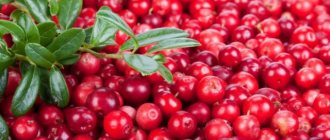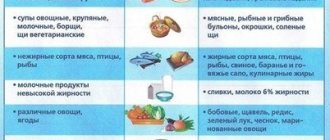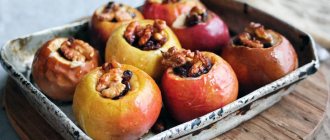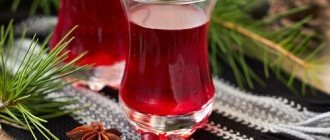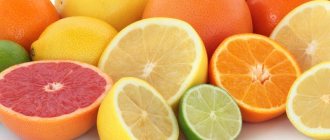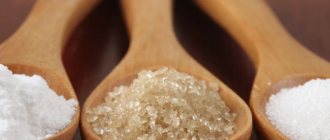Carrot juice is one of the most delicious and healthiest vegetable juices. It contains a huge amount of vital vitamins - A, E, F, C, K, PP. It also contains well-known microelements (iron, phosphorus, copper, iodine and potassium salts). Carrots are a source of natural sugars, which makes their taste incredibly pleasant. In addition to its wonderful taste, carrots are unique for their beneficial properties for the human body:
- strengthens the immune system;
- helps maintain and even improve vision;
- has a tonic effect;
- carrots contain substances that prevent the occurrence of cancer cells;
- can improve the functioning of the gastrointestinal tract (has a mild laxative effect, which helps to cope with constipation naturally without resorting to medications);
- contains antioxidants, which helps protect body tissues from the negative effects of the environment.
Thus, this vitamin drink is very useful and is often even prescribed by doctors to support the body in certain situations. However, with all the advantages of carrot juice, there are restrictions on its use. Many people suffering from inflammation of the pancreas are interested in whether it is possible to drink carrot juice with pancreatitis? It is impossible to give a definite answer to this question, because each case of the disease is unique and requires mandatory consultation with a doctor, but there are also general recommendations.
Is it possible or not to have carrot juice in the acute period of pancreatitis?
During an exacerbation of a chronic disease or during an attack of acute pancreatitis, carrot juice is strictly contraindicated. This is due to the peculiarities of its effect on the body:
- Carrots stimulate the active production of pancreatic juice and put additional stress on the pancreas, which is extremely undesirable during the period of illness, and treatment is aimed at relieving it as much as possible.
- Fiber, the processing of which is difficult during illness, is contained in carrots in large quantities, which provokes bloating and disruption of the gastrointestinal tract, bringing a lot of discomfort to a person.
- Carrots are rich in glucose and fructose, the breakdown of which involves insulin, and its production is often impaired during pancreatitis, so a lack of insulin when consuming large amounts of sugar can lead to the development of diabetes.
What juices can be used for therapeutic purposes?
You will have to give up tasty, aromatic juices during an exacerbation of pancreatitis, and you should also limit their use during the period of remission so as not to provoke the disease. At the same time, there are some juices that can improve the condition of the pancreas and eliminate unpleasant symptoms.
Aloe
An old, time-tested folk remedy that has a lot of useful properties:
- Anti-inflammatory;
- Wound healing;
- Antibacterial;
- Antiseptic;
- Regenerating;
- Calming;
- Strengthening.
The active components of the juice protect the mucous membrane, destroy pathogenic microflora, stop the inflammatory process, strengthen blood vessels, and prevent cell destruction.
Aloe juice is used fresh for therapeutic purposes. The leaves are cut from the plant, wrapped in cotton cloth, a plastic bag, and placed in the refrigerator for 14 days. Squeeze out the juice in any convenient way, mix in equal proportions with honey. The medicine must be taken within 3 hours after receiving the juice, otherwise the beneficial properties will be reduced.
Currently reading: Is it possible or not to eat plums for pancreatitis of the pancreas?
Potato
It has the properties of antacids, so it has a beneficial effect not only on the pancreas, but also on the stomach and intestines. Potato juice reduces acidity, protects the mucous membrane of the digestive organs from further irritation, stops the inflammatory process, helps eliminate pathogenic microflora, and improves digestion.
You should only drink potato juice fresh, before it turns dark. This happens in approximately 15 minutes. When interacting with air, oxidation occurs and components harmful to the digestive system appear. Therapy with a healing drink should be carried out at the end of summer, beginning of autumn, when the potatoes are young.
Peel the peel, squeeze out the juice using a juicer, or use the old fashioned method. Rub on a fine grater, place in gauze folded in several layers, squeeze out the liquid. Drink 50 ml at a time. Treatment is carried out until you feel better.
Pumpkin
The safest of all permitted juices for pancreatitis. It has anti-inflammatory, analgesic, sedative, antispasmodic, and laxative properties. You are allowed to drink in unlimited quantities, the whole point is that you won’t want to drink a lot. For therapeutic purposes, it is enough to drink 50-100 ml three times a day. It is recommended to take half an hour before meals. The drink will ease digestion, normalize acidity, and relieve the unpleasant, painful symptoms of pancreatitis.
Carrot
Many will begin to prove the opposite, but the whole point is that carrots, cut into pieces or grated, are difficult for the pancreas, since to digest them you need to activate the production of certain enzymes, which a sick pancreas in the acute stage cannot cope with. It is recommended to combine carrot juice with pumpkin or potato juice. The taste will be more pleasant, the drink will be healthier. You should drink 100 ml on an empty stomach. You cannot add salt or sugar.
From Jerusalem artichoke
The healing properties of this vegetable are often forgotten. Meanwhile, Jerusalem artichoke juice has a beneficial effect on the digestive system, including the pancreas. The juice has anti-inflammatory, antispasmodic, analgesic, enveloping, and soothing properties. Reduces irritation, painful symptoms, normalizes intestinal function. You should drink fresh, 100 ml 3 times a day on an empty stomach.
Carrot juice during remission
As soon as the doctor determines that the inflammation of the pancreas has entered the stage of remission, the patient immediately receives recommendations regarding a therapeutic diet. The list of permitted products is quite wide, and carrot juice is also included in it.
There are a few rules to remember before you start introducing it into your diet:
- It is introduced into the diet gradually and only after all other acceptable vegetable and fruit juices have been tried.
- At the initial stage, carrot juice can only be drunk without pulp.
- Before you start using it, you can add it to other juices, thereby mitigating its possible negative impact on the body. The ideal option is a combination of carrot and apple juices in a ratio of 1 to 3.
- If diarrhea occurs, drinking carrot juice should be postponed, as it has a pronounced laxative effect.
- You should drink no more than 2 glasses of carrot juice per day. Some doctors are of the opinion that a safer daily dose is 100 ml. You shouldn’t drink juice every day, but you don’t have to give it up completely; 2-3 times a week will be enough.
- The drink must be fresh, otherwise upon contact with oxygen it loses many beneficial properties.
- It can be mixed with other juices, milk porridge, yogurt or jelly.
Allowed and prohibited juices at different stages of pancreatitis
If painful symptoms intensify, any juices are prohibited, as they have a negative effect on the inflamed pancreas. Their introduction into the diet is possible only a month after the last exacerbation. Non-acidic compotes and jelly are acceptable for consumption after 7-14 days.
In case of chronic pancreatic disease, juices are permissible only during the recovery stage. You can drink a maximum of 200 ml of the drink per day, which must be diluted. That is, a glass of juice should be diluted in half with water and this volume should be drunk throughout the day. The optimal single serving is 50 ml.
Pumpkin
Freshly squeezed pumpkin juice for pancreatitis is allowed for patients with increased stomach acidity. Suppresses inflammatory processes, has a calming effect, and accelerates recovery. The product removes toxic substances and excess fluid from the body, and has a beneficial effect on digestion due to the large amount of fiber.
It is enough to drink 0.5 cups of pumpkin juice 30 minutes before meals. When taken systematically, the pain goes away and pancreatic recovery accelerates.
Carrot
It is useful for patients with pancreatitis, but it should not be taken during an exacerbation or during attacks, since the product contains a large amount of sugar. When the main symptoms of pancreatitis pass, regular consumption of carrot drink improves the condition of the pancreas.
If there are no contraindications, juice is introduced into the menu systematically and is always diluted with water. You shouldn’t consume it every day; 0.5 glasses twice a week are enough.
Potato
Allowed only with stable remission. Relieves inflammation and spasms, has a positive effect on the functioning of the cardiovascular system, and lowers blood pressure. The vegetable contains vitamins A, PP, K, E, C, group B. You should start taking it with a low dosage - one spoon. Gradually the amount increases to 200 ml per day.
People suffering from diabetes and reduced enzymatic function will have to dilute fresh juice with water.
Apple
It is the most affordable, since the fruits are widespread in our country and are perfectly preserved in winter. Apples can be eaten already 3 days after an exacerbation, but not in their pure form, but as the main ingredient in compotes and desserts. Drinking juice is possible only during remission. Only fully ripe sweet fruits are suitable.
The peel is first removed and the juice is diluted with water 1:1. It is recommended to drink no more than 2 glasses an hour after eating.
Beetroot
Beetroot juice has many beneficial properties and contains many microelements necessary for the normal functioning of the body. Beets contain a lot of iron, which is involved in the process of hematopoiesis, relieves nervous tension, and promotes normal heart function. Along with this, the product contains a lot of amino acids that irritate the mucous membrane of the gastrointestinal tract.
The drink is allowed only during stable remission, always in limited quantities. Before use, it sits for a couple of hours. It is useful to mix beet juice with pumpkin or carrot juice.
Tomato
Many people prefer this type of juice, but if symptoms of pancreatitis appear, it is prohibited due to the high amount of organic acids. They activate the synthesis of gastric juice, which provokes increased gas formation and activates the inflammatory process.
Outside of an exacerbation, you can drink tomato juice, but first dilute it with water. The drink kills microbes, removes toxic substances, and has a beneficial effect on the nervous system.
Cabbage
The vegetable contains vitamins B, K, C, as well as iron, potassium, magnesium and other useful components. Cabbage juice is considered the main ingredient in many folk recipes against colitis, peptic ulcers, and gastritis.
The most appropriate is to drink seaweed drinks. It has the best effect on the gastric mucosa and also prevents the development of dyspeptic symptoms.
In the presence of an inflammatory process, fresh juices made from seaweed are useful. They prevent disorders of the digestive organs and soothe the mucous membranes.
Taking a small amount of sauerkraut shortly before meals will reduce pain and improve digestion.
Celery juice
The product contains organic acids, vegetable fats, and essential oils. Fresh juice activates the production of enzymes, so drinking it during acute pancreatitis is prohibited.
Celery root is used in preparing various dishes 30 days after suppressing the inflammatory process. It is preliminarily subjected to heat treatment. Celery juice is introduced into the menu 1.5 years after the last outbreak of the disease.
Birch
The most useful drink for people who suffer from pancreatitis, but its harvest season is short. The drink normalizes metabolism, replenishes the lack of vitamins, organic acids, iron, and calcium.
The acute stage of pancreatitis allows you to drink only fresh product. In the chronic form, a decoction is prepared with the addition of oats. You can consume it in an amount of 150 ml half an hour before meals.
Pomegranate
It is characterized by many beneficial properties, but is not allowed if signs of pancreatitis return. Antioxidants, amino acids and phytoncides are necessary for a healthy body, but if the functioning of the pancreas is disrupted, they can worsen the patient’s condition.
Only after eliminating the main symptoms of the disease is it permissible to consume 200-300 ml of pomegranate juice diluted with water per day.
Citric
Any citrus fruits are prohibited for patients with pancreatitis, as they have a high concentration of citric acid. Despite many useful microelements, the drink worsens the condition of the affected organ and can lead to an attack.
Apricot and peach
Fragrant fruits include many B vitamins, as well as C, E, A, minerals, amino acids, fiber and other substances. Peach juice has a pronounced choleretic effect. Apricots cause nausea and increased pain. Both of these products are contraindicated in acute pancreatitis.
Drinking juice from these fruits can cause intestinal upset, bloating and other unpleasant symptoms.
When long-term remission is achieved, the squeeze is added to mousses and compotes.
Berry
If signs of pancreatitis are observed, fresh berry juices are prohibited. Normalization of the patients' condition allows them to be used, but in small quantities. Drinks made from viburnum, strawberries or raspberries must be freshly prepared. They are filtered and diluted with water before use, as they contain a lot of acids.
Grape
Based on its usefulness for the human body, grapes are ahead of many fruits. It strengthens the immune defense, removes salts, stimulates the activity of the heart muscle, and regulates blood circulation. But due to the content of organic acids, the juice stimulates the synthesis of digestive enzymes.
A large amount of sugar increases the risk of diabetes, so consuming fresh grape juice for pancreatitis is not recommended. The only indication is chronic gastritis with a low level of gastric acidity.
Plantain juice
This medicinal plant contains organic acids, glycosides, tannins and others. Plantain strengthens the immune system and has tonic and calming properties.
To prepare the drink, the leaves are crushed and squeezed using gauze. The resulting liquid is mixed with water 1:1 and boiled for a couple of minutes. For a month, the decoction is consumed before meals, 1 tsp.
Aloe juice
This plant is used in many folk recipes. Aloe relieves inflammation, relieves pain, and accelerates the healing of damage. In case of pancreatitis, aloe juice affects the process of bile production, on which the functioning of the pancreas depends.
During the period of improvement of the patient's condition, the product is taken with honey, before meals. The optimal dose is 1 tablespoon per day.
Exotic and unusual juices
For pancreatitis, juices made from exotic fruits are not recommended: papaya, passion fruit, mango. Cherries contain a small amount of fruit acids, but sometimes they are enough to cause pain and increase inflammation. Cherries are very sour; it is better to postpone their use until a long-term remission occurs. 5 days after the onset of remission, berries are allowed to be added to jelly and desserts.
It is allowed to drink watermelon and melon juice if there are no symptoms for a long time. It is prepared from ripe fruits.
Carrot puree for pancreatitis
It should be noted that not everyone likes juice, so you should decide whether or not you can use carrot puree, which is in no way inferior in its properties. It turns out that carrot puree can be useful for pancreatitis, especially since its taste is very good. It is easy to prepare vegetable puree even at home. It is better to use a multicooker or double boiler for this, because when cooking in a large amount of water, all the beneficial substances go into the broth or are completely destroyed, and it is better to forget about such cooking methods as stewing or frying in case of pancreatitis. Salt, oil and spices are not added.
So, the recipe for making carrot puree is simple:
- take 4 medium-sized root vegetables;
- wash the carrots thoroughly, peel them;
- place in a double boiler or slow cooker;
- cook for an average of 30 minutes, but if necessary, the cooking time can be increased (fresh and small carrots cook faster, old and thick ones - on the contrary, longer);
- puree using a blender or masher.
Carrot puree prepared in this way has a very pleasant taste and may well be a dessert on your table. You can diversify it by adding applesauce.
Summarize. People suffering from inflammation of the pancreas and following a therapeutic diet can and even need to drink carrot juice and eat carrot puree, but only during a period of stable remission. During the acute period of the disease, these products must be excluded from the diet. Also, when creating a menu, consultation with your doctor is required.
Is it possible to eat carrots for pancreatitis? This is a relevant question for everyone who has problems with the functioning of the pancreas. Since ancient times, fresh root vegetables have been nicknamed the queen of vegetables, as they influence the course of many physiological processes. As a rule, the diet involves the inclusion of carrots, but what about carrot juice for pancreatic disease?
Useful recommendations for use
Nutritionists give the following useful tips on consuming carrots for pancreatitis and cholecystitis:
- In the dietary menu, such a boiled product goes well with other boiled vegetables - beets, potatoes, zucchini, squash, onions, broccoli, as well as with boiled dietary meat (chicken or turkey fillet, rabbit) or lean fish.
- For better absorption of vitamins, dishes made from this vegetable should be seasoned with olive or linseed oil.
- Vegetable soups containing carrots are very useful.
- When baking the product in question along with apples or pumpkin, you can add a little honey for taste.
- You should eat small meals - 5 to 7 times a day.
- The daily food intake should not exceed 3–3.5 kg.
- The fluid consumed per day should correspond to the amount of 2–2.5 liters.
- The basis of nutrition should be proteins, and the content of fats and carbohydrates in the menu should be reduced to minimum standards.
- Food should be eaten boiled and steamed.
- It is allowed to consume no more than two boiled eggs per 7 days or steamed omelettes, water soups, stale or slightly dried bread.
- It is allowed to consume no more than 20 g of butter and 70 g of granulated sugar per day.
- For a therapeutic effect, 30–90 minutes before meals, you can drink 100–300 g of the following mineral water - “Essentuki 17”, “Essentuki 4”, “Smirnovskaya”, “Svalyava”, “Polyana Kvasova” or other, preferably hydrocarbonate waters. The water used for treatment should be still and heated to 35...39°C.
In acute conditions, it is eaten only boiled in the absence of attacks. Important! To prevent the occurrence of pancreatitis and its exacerbations, you should adhere to fractional meals, avoid fatty, spicy, fried foods, canned food, sausages, fast food and alcohol. It is necessary to monitor the health of the gastrointestinal tract and gallbladder.
Diluted carrot juice can be consumed in the chronic form in reasonable quantities, and raw grated product is allowed only in cases of stable remission.
Is it possible to drink carrot juice if you have acute pancreatitis?
When an acute attack occurs, any food is excluded from the diet - the so-called therapeutic fasting. Carrot juice for pancreatitis is prohibited due to the following negative effects:
The risk of developing diabetes mellitus, since the absorption of carrot juice and sugary substances in particular requires insulin, the synthesis of which is disrupted during the inflammatory process in the pancreas.
Excessive stimulation of gastric and enzymatic secretions will not allow for rest, which the inflamed organ needs more than ever.
Kissel or vegetable compote is introduced gradually in a diluted form as the disease subsides.
Rules to follow when drinking juices
For pancreatitis, you can drink freshly squeezed juices.
Doctors recommend drinking juice only freshly squeezed and under no circumstances resorting to consuming concentrates, especially in cases of exacerbation.
Adding sugar or honey is strictly prohibited. At the same time, even freshly squeezed juice must be diluted with water.
During an acute period of illness, avoid citrus juice and juice containing large amounts of sugar. Such drinks can be drunk in small quantities with great caution after about a month. During difficult periods, it is better to replace them with fruit drink or compote.
Juice and other drinks in their pure form can be gradually added to your diet, only if the body tolerates them well. If you really want to add sugar, then this is allowed during periods of calm.
Different juices can be mixed, this practice is especially rational when mixing sour and sweet juices. You can also add juices to fermented milk products (ryazhenka, yogurt, etc.). The amount of juice consumed per day should not be more than 200 ml, with the exception of beet juice, the amount of which per day should not exceed 60 ml. For people with pancreatitis, the following recommendations exist:
- Avoid drinking packaged juices, as they contain large amounts of sugar and preservatives.
- Drink juices immediately after they are made, as they quickly lose their beneficial properties, however, beet juice is an exception here; it is even recommended to keep it in the refrigerator for some time
- Pay attention to the freshness of fruits and vegetables, choose ones without mold or dents
Apple juice is good for pancreatitis.
Valuable juices for pancreatitis are the following:
- apple
- peach
- apricot
- pear
- watermelon
- melon
- cherry
Apricot and peach juice do not need to be diluted, but the rest do. The most valuable vegetable juices: potato, carrot, pumpkin. The following juices should be consumed in limited quantities:
- crimson
- tomato
- plum
- pineapple
- tangerine
- citric
Read: Recipes for dishes after gallbladder removal, diet after surgery
Such juices can be drunk in diluted form only during calm periods. There are also juices, the use of which is prohibited for any pathological condition of the pancreas:
- cranberry
- grape
- cherry
- beetroot
- grapefruit
- from white and red currants
- pomegranate
- from exotic fruits
By consuming such juices, you can get undesirable consequences. They contain substances that have a detrimental effect on the diseased organ and can bring new painful sensations to the patient’s well-being.
Carrots for pancreatitis in remission
Once remission is achieved, it is possible to evaluate the pleasant taste and beneficial properties of the vegetable. This will require you to follow a number of simple rules.
Conditions under which pancreatitis and carrots can harmonize:
Start drinking carrot juice with a minimum volume. It is better to first check what the body’s reaction to other fruits and berries will be. Before drinking pure carrot juice, try a combination of carrots and apples, starting with a one-to-three ratio.
At first, you are allowed to drink juice without pulp, so you will have to strain the drink thoroughly.
If, despite the improvement in your well-being, you continue to be bothered by stool upset, hold off on introducing carrot juice, as it can only worsen gastrointestinal disorders.
Drink juice no more than three times a week. The optimal volume is 0.5-1 glass per day, always freshly prepared, as soon as it is possible to preserve all the healing properties of the drink.
Lovers of carrot juice can add it to cottage cheese or yogurt, compote and jelly, various cereals and mix it with other fruits, such as an apple, for example, or berries.
The complex of methods for getting rid of pancreatitis necessarily includes a therapeutic diet. A proper diet helps prevent the development of the disease, normalize metabolism, and prevent complications.
Period of exacerbation of the disease
Is it possible to drink carrot juice or eat carrots during an exacerbation of pancreatitis? The answer is clear - you can’t eat raw carrots, carrot puree, and especially carrot juice if you have pancreatitis. Since, to reduce inflammation of the gland, it is recommended to abstain from food altogether for 4 days. Despite the fact that carrots are a very healthy product, they can be introduced into the diet only 1 week after the attacks have stopped (the attending physician must allow it), and there are several reasons for this:
- when consuming carrots during an exacerbation, excessive stimulation of gastric secretion and enzymatic function of the pancreas (PG) is extremely undesirable;
- carrots contain substances that require increased production of insulin, and since, with inflammation of the pancreas, its production may be disrupted, the gland will experience increased load.
Considering all this, it is better to wait until the remission phase begins, during which you can already eat various vegetables, including carrots.
Beneficial properties of root vegetables
It is known that carrots are beneficial for the body as a whole, but especially for the pancreas. It eliminates problems with the digestive system, cleanses the intestines, and helps maintain the functionality of the gastrointestinal tract. It is also a source of micro- and macroelements and vitamins.
Carrots are low-calorie foods. In its raw form it has 41 kilocalories, in boiled form it has even less - only 35 kilocalories. The vegetable contains almost no fat, but is full of carbohydrates and proteins.
In terms of vitamin A content, carrots are ahead of any other vegetables. It is enough to eat 100 grams to get 240% of the daily value. It also contains:
- a nicotinic acid;
- ascorbic acid;
- vitamins E, H, K;
- group of vitamins B;
- organic acids;
- dietary fiber and other beneficial substances.
By including carrots in your daily menu, you can:
- protect yourself from the flu;
- improve the health of the skin and mucous membranes;
- slow down the aging of the face and body;
- strengthen immunity;
- keep teeth and bones intact;
- normalize metabolic processes.
The benefits and harms of carrots
Carrots are beneficial to the human body in the following ways:
- It is an excellent supplier of vitamin A, which is beneficial for skin and eye health, reproductive function and immunity.
- Useful for cardiovascular activity. It reduces the amount of cholesterol and improves blood supply to the brain, helping to reduce blood pressure.
- Contains antioxidants that prevent cancer and age-related changes.
- Used for beauty and youth of the skin, promotes collagen synthesis.
- Improves digestion as it contains a lot of fiber. Helps with constipation.
- Normalizes carbohydrate metabolism and is useful for obesity.
- Improves mineral metabolism, therefore it is used for cholelithiasis, kidney stones, osteochondrosis and polyarthritis.
- Has antiseptic and anti-inflammatory properties.
- It has a healing effect and is used externally for wounds and burns.
- Recommended for anemia.
- Strengthens the immune system. Carrots contain phytoncides, similar to substances found in onions and garlic, but the orange vegetable tastes better and does not irritate the mucous membranes, and does not have an unpleasant odor. It is useful to chew it to improve the health of the oral cavity and eliminate odor from it.
With its help, they treat gastritis with low acidity, liver diseases, improve appearance, the activity of the sex glands, protect the cardiovascular system, and strengthen the body. It is useful for oncology. It is the juice that is applied to skin lesions or dropped into the nose for a runny nose, mixed with vegetable oil. Did you know? 100 g of carrots contain 222% of the daily dose of vitamin A and 240% of carotene (the precursor of vitamin A).
There are contraindications for drinking carrots and carrot juice:
- excess vitamin A in the body;
- allergic reactions;
- gastrointestinal ulcers;
- exacerbation of gastrointestinal diseases;
- increased acidity.
Diabetics should use these foods with caution, as carrots contain a lot of sugars. The glycemic index of the raw root vegetable is 35, and the boiled one is 85.
Carrot recipes
Many people think that carrots are a rather boring vegetable, from which it is difficult to prepare a unique dish, especially when the choice is limited by the diet. But even in this case, you can use interesting recipes to diversify your menu.
Boil large carrots until soft. You can add a couple of cloves of garlic to the water. Cool the boiled vegetable and cut into cubes. Season with parsley and butter, salt and lemon juice. Eat chilled
- We will need carrots, ginger, orange zest, onions, butter and salt.
- Cut the carrots and onions into cubes and simmer in water.
- Separately, cook the chicken broth and skim off the fat. Then add orange zest and a small piece of ginger to add a wonderful aroma to the soup. Boil them a little and remove.
- Add carrots and onions to the broth and cook until they become very soft.
- Transfer the vegetables to a blender, chop and add broth until the soup reaches the desired consistency.
- Add spices and salt to taste, a piece of butter and sprinkle with herbs.
- Peel two medium carrots, wash well, chop and pass through a juicer. You can add other vegetable juices to carrot juice in a 1 to 1 ratio.
- If you decide to drink carrot juice pure, add a little cream to it. This way the vitamins are better absorbed by the body.
Cut the carrots and onions into large pieces, chop the cabbage, you can add a little tomato or zucchini, sauté everything in a saucepan over water until tender. Add salt, pepper, garnish with herbs and you are ready to eat.
Carrot puree turns out very tasty if you add a little apple to it. All ingredients must be simmered until tender, then chopped in a blender or using a grater.
Carrots for pancreatitis can be an excellent help in the fight against the disease. When creating a menu, be sure to consult with your doctor so that the prepared dishes are beneficial!
Carrots and chronic pancreatitis
Raw carrots are contraindicated for pancreatitis, even during periods of stable remission. In the chronic stage of the disease, you can eat the orange root vegetable boiled or steamed. What is the most beneficial way to prepare carrot puree for pancreatitis?
- Several vegetables are peeled and washed.
- Place the carrots in the steamer bowl.
- After 30 minutes, the finished root vegetables are transferred to a separate bowl and chopped.
- To taste, add a little low-fat sour cream, melted butter or olive oil to the puree.
On a note! Eating carrots with butter or sour cream promotes the absorption of carotene.
In addition to purees, diet cutlets, stews and carrot soufflé can be included in the patient’s diet.
Carrot juice for pancreatitis is gradually introduced into the patient’s daily diet. It is recommended to prepare the drink with the addition of apple or potato juice. After some time, you can drink juice with pulp.
Important! Carrot juice for pancreatitis can be drunk after meals every other day. The daily portion of the drink is one and a half glasses.
It is best to prepare carrot juice for pancreatitis yourself. To do this, several root vegetables are peeled, washed and juice is squeezed out of them. When purchasing ready-made juice, you should carefully study the composition.
Moderate consumption of boiled carrots for pancreatitis improves digestion, normalizes stool and has a beneficial effect on the general condition of the patient.
Recipes for dietary dishes with carrots for pancreatitis
Dietary food not only has healing properties, but if prepared skillfully, it can be tasty. We offer a selection of recipes for healthy dishes with carrots that can be prepared for a patient with pancreatitis.
It should be borne in mind that low-fat dairy products are used for preparing dietary dishes.
Carrot puree for acute pancreatitis
Dietary puree of 3-4 carrots can be introduced into the diet after acute attacks of inflammation in the pancreas have been eliminated, and the dish is prepared without adding salt.
- Peel and rinse vegetables.
- Cut into small cubes and place in a saucepan.
- Add water to lightly cover the vegetable.
- Boil for 30-40 minutes from the moment of boiling.
- Grind the hot carrots into a puree using a mixer.
Carrot casserole in a slow cooker
To prepare 1 serving of casserole you will need the following products:
- Carrots – 200 g;
- Egg – 0.5 pcs.;
- Semolina – 10 g;
- Milk – 30 g;
- Sugar – 10 g;
- Salt – 2 g;
- Sour cream – 40 g;
- Drain. butter – 10 g;
- Wheat crackers – 5 g.
- Wash the root vegetable, peel and grate on a fine grater.
- Beat half the egg with sugar.
- Combine the resulting mixture with carrots, pour in milk, add semolina, stir until smooth.
- Grease the multicooker bowl with butter and add the carrot-semolina mixture.
- Bake on the Baking setting for approximately 65 minutes.
- Transfer to a plate, pour over sour cream and serve.
Potato and carrot cutlets
To prepare dietary cutlets you will need the following ingredients:
- Potatoes – 4 pcs.;
- Carrots – 2 pcs.;
- Semolina – 1 tbsp;
- Milk – 100 ml;
- Flour – 1 tsp;
- Drain. oil – 1 tbsp.
- Egg – 1 pc.;
- Salt – a pinch.
- Peel the potatoes and boil until soft.
- Pour milk into another bowl, add butter and heat to 70 degrees.
- Peel and chop the carrots into small strips and add to the milk-butter mixture. Cook over low heat until half cooked, stirring constantly to prevent burning. Remove from heat, cool.
- Rub the hot potatoes through a sieve or grind in a blender and let cool.
- Separate the white from the yolk. Beat the whites into foam.
- Combine carrots, mashed potatoes, and beaten egg whites. Add semolina and yolk to them, mix everything.
- Form small cutlets, roll in flour.
- Bake in the oven for 30 minutes at 180 degrees.
- Before serving, sprinkle with sour cream.
Adding low-fat sour cream or butter to carrot dishes improves the absorption of beta-carotene.
Steamed apple and carrot soufflé
A delicious dessert steamed from the following products will help diversify the dietary table for pancreatitis:
- Carrot – 1 pc.;
- Apple – 1 pc.
- Cottage cheese - 250 ml;
- Egg – 1 pc.;
- Sugar - 2 tsp. .;
- Butter – 2 tsp.
- Peel the vegetables, rinse, cut into small cubes and simmer in a small amount of water until soft.
- Peel the apples, remove the core and grind them together with the finished carrots in a blender or pass through a meat grinder.
- Add cottage cheese, grated yolk with sugar and melted butter to the resulting mixture, mix.
- Separately, beat the protein into a strong foam and add to the rest of the products.
- Grease the molds with oil, add the puree and cook in a steam bath or in a slow cooker for 20 minutes.
- Add yogurt or sour cream before serving.
carrot juice
A healthy and nutritious drink is very easy to prepare:
- Wash and peel the root vegetables.
- Pass through a juicer and strain.
- Dilute with other acceptable juice, take 150-200 ml every other day.
Stewed carrots with prunes
Stewed carrots with prunes would be an excellent addition to a therapeutic diet:
- Carrots – 250 g;
- Drain. butter – 7 g;
- Milk – 13 ml;
- Sour cream – 25 g;
- Prunes – 60 g.
- Chop the peeled and washed carrots into thin strips or grate them.
- Place in a thick-bottomed saucepan, add butter and milk.
- Simmer over low heat until half cooked, stirring occasionally to avoid burning.
- Sort the prunes, rinse and soak in warm water for 15 minutes.
- Then cut into pieces and add to the carrots, bring to full readiness. To improve the taste, you can add 1 tbsp. raisins Prunes can be replaced with dried apricots.
- Serve, top with sour cream.
What are the benefits of carrots?
This vegetable is popular all over the world due to its excellent taste and beneficial qualities. In addition, carrots are widely used in alternative medicine to treat many diseases.
When used correctly, orange root vegetables can help saturate the body with the necessary vitamins and minerals. In addition, it accelerates metabolic processes and improves the supply of oxygen to tissues. All these healing properties of carrots have long been recognized by official medicine, and its seeds are even used in the manufacture of some medications, the action of which is aimed at improving cardiac functions and the patency of blood vessels.
In addition to this, carrots:
- Improves vision.
- Increases immunity.
- Normalizes the functioning of the gastrointestinal tract.
- Saturates the body with vitamins.
The main constituent of the vegetable is beta-carotene, but carrots are also a source of other nutrients, including:
- proteins;
- carbohydrates;
- fats;
- fiber;
- enzymes;
- antioxidants.
Vitamin composition of root vegetables
Beta Carotene (Vitamin A) Thiamine (Vitamin B1) Riboflavin (Vitamin B2) Pantothenic Acid (Vitamin B5) Pyridoxine (Vitamin B6) Folic Acid (Vitamin B9) TE (Vitamin E) Ascorbic Acid (Vitamin C) Niacin Equivalent (Vitamin PP ) Biotin (vitamin HH) Phylloquinone (vitamin K) Boron Vanadium Calcium Iodine Magnesium Iron Copper Potassium Selenium Zinc Phosphorus Cobalt Chlorine Sodium Molybdenum Sulfur Manganese